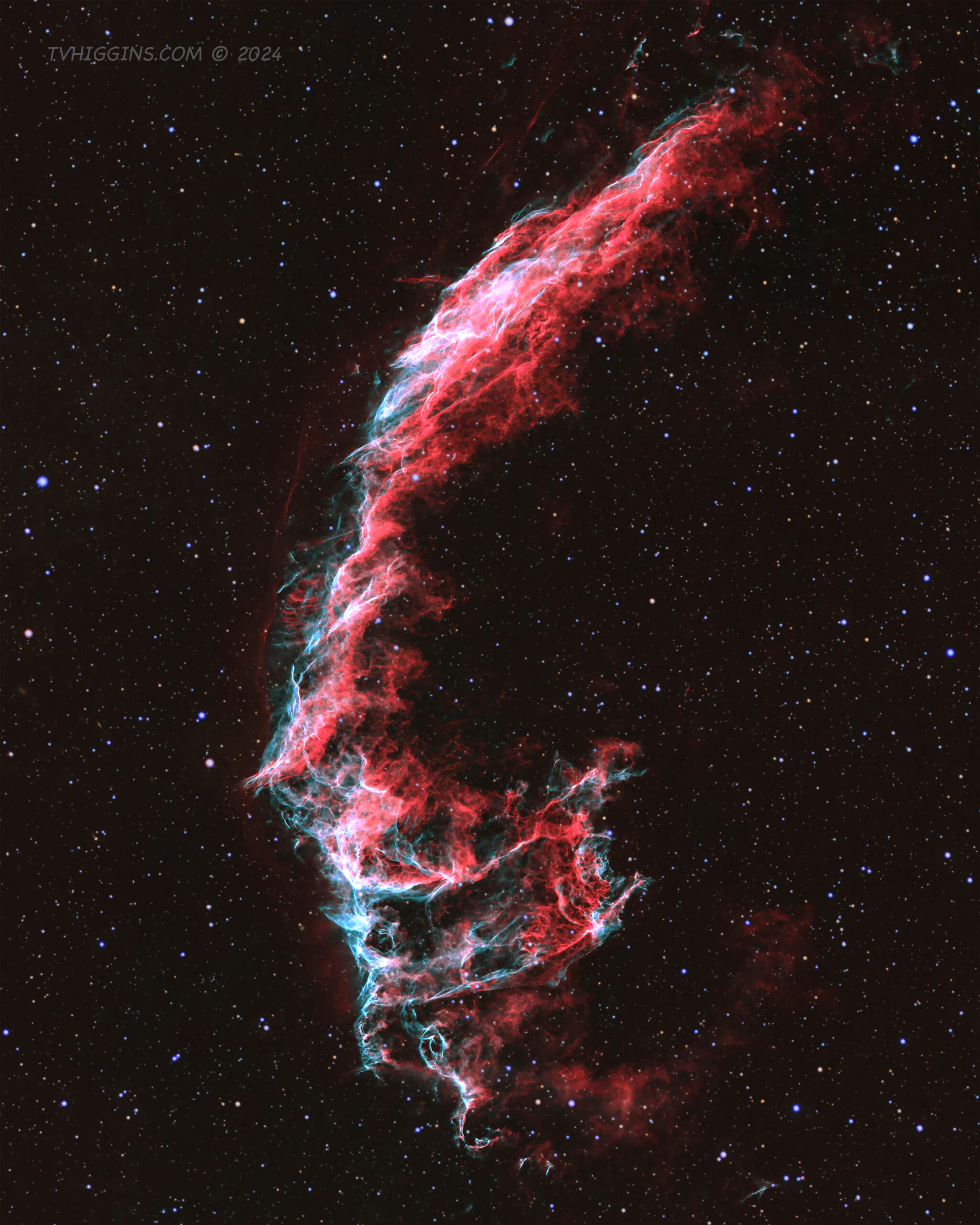Eastern Veil Nebula, Take Three
- Telescope: Askar FRA 500 (90-mm aperture)
- Mount: ZWO AM5 (strain-wave gear drive)
- Autoguiding: Off-axis guider with ZWO ASI120-MM Mini camera
- Controller: ZWO ASIair
- Optical Configuration: Flat-field quintuplet Petzval refractor (f/5.6 w/o reducer)
- Filterwheel: RGB (Astronomik 1.25-in.); H-alpha (Baader 7-nm); O-III (Baader 4-nm)
- Imaging Camera: ZWO ASI1600-MM Pro
- Camera Gain: 70 (RGB); 0 (H-alpha & O-III)
- Sensor Temperature: -10° C
- Light Frames: ~120 (H-alpha & O-III); 40 (RGB)
- Calibration Frames: 60 darks, 60 biases, 30 flats per filter
- Total Exposure Time per Filter: 8 h (H-alpha & O-III); 0.66 h (RGB)
- Pre-Processing & Processing: PixInsight
- Post-processing: Photoshop CC
- Imaging Locations: Sierra Nevada Mountains (8,600 ft.); Los Angeles, Calif.
The Eastern Veil Nebula, part of the Cygnus Loop, is a favorite deep-sky object (DSO) among professional and amateur astronomers alike. It is created from the shock wave and remnants of an ancient supernova explosion hurtling through the interstellar medium (ISM) at hypersonic speeds. The energy released into the ISM causes it to glow at wavelengths across the spectrum from x-rays to radio waves. This image, taken in the visible spectrum, captures the continuum emissions of dust (white) as well as the line emissions from hydrogen atoms (red) and oxygen atoms (teal).
To photograph this object with my new rig, RGB subframes were shot first at a dark-sky location far away from the city. Back in the city, I then shot 8 hours of narrowband subframes in H-alpha and 8 hours in O-III. All imaging sessions were fully automated with the ASIair.
To ensure the highest color fidelity of the star field and nebula, RGB color calibration was achieved during processing using Gaia’s latest photometric data (https://www.aanda.org/articles/aa/full_html/2016/11/aa29272-16/aa29272-16.html#app) with PixInsight’s Spectrophotometric Color Calibration tool. Blending the narrowband data into a final HaOiiiRGB image was accomplished using the PixelMath tool. The latest AI image-processing tools were also employed for noise reduction, star-field optimization, and deconvolution. The resulting image reveals the Eastern Veil Nebula and its surrounding star field with superlative color and clarity.
